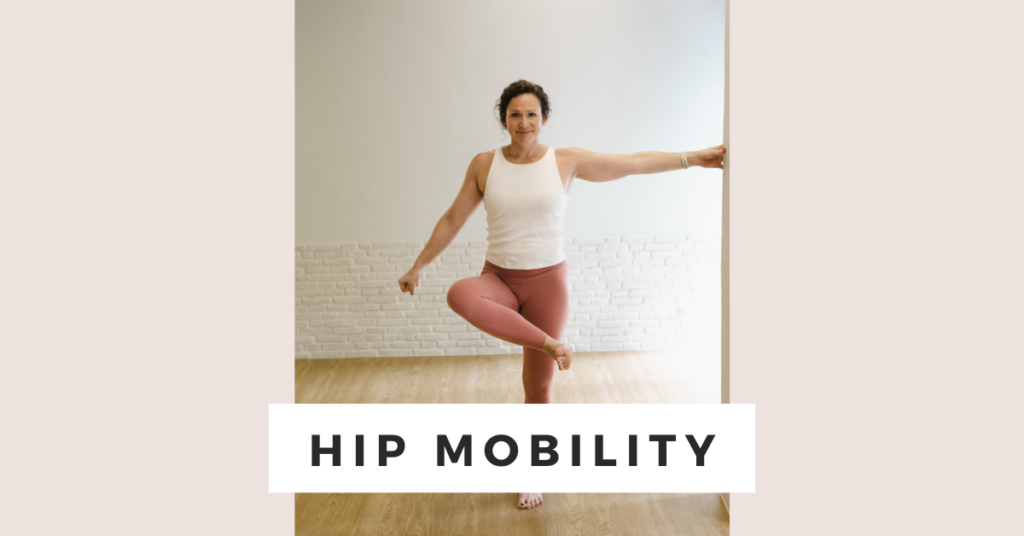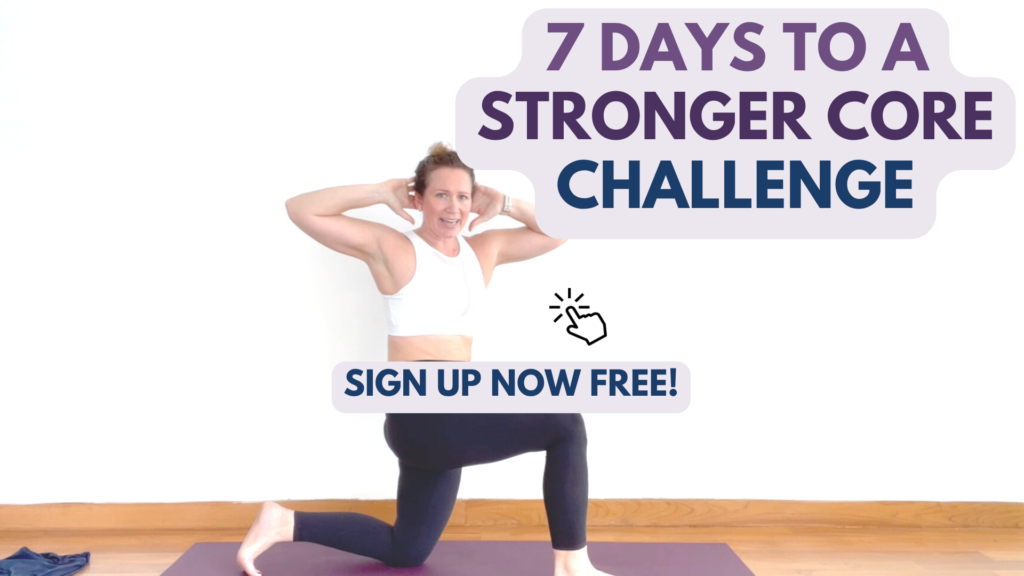
Why You Need to Work on Your Hip Mobility
When it comes to fitness and health, many people focus on things like cardio, strength training, and flexibility. But one area that often gets overlooked is mobility – and particularly your hips! The hip joint is a complex structure that plays a crucial role in many everyday activities, from walking and running to sitting and standing.
When your hips are tight or restricted, it can lead to a variety of issues. From poor posture and chronic pain, pelvic floor issues – to reduced performance and challenges in the normal day to day activities. That’s why everyone should prioritise hip mobility. Regardless of age, fitness level or lifestyle.
It's all about the hips
Mobile and functional hips are essential for good movement and health. They provide structural support. The hip bones and surrounding muscles and ligaments help to distribute the weight evenly and maintain the alignment of the spine.
The hip joint is a ball-and-socket joint that allows for a wide range of movements, such as flexion, extension, abduction, adduction, and rotation. These movements are essential. The hips transfer force from the lower body to the upper body and vice versa. This transfer of force is important in many physical activities, such as lifting, pushing, and pulling.
For women, the hips widen during puberty and pregnancy to accommodate childbirth. The width and mobility of the hips can affect the ease and safety of childbirth.
So why should everyone prioritize hip mobility? Let’s take a closer look.
1. Reduce the risk of injury
When your hips are tight or restricted, it can put extra stress on your lower back, knees, and ankles, which can lead to pain and injury. Everything in the body is connected! One muscle or part doesn’t work in isolation. The muscles around the hips play a vital role in maintaining balance and stability. They help to control the movement of the pelvis and prevent excessive motion that could cause falls or injury.
By prioritising hip mobility, you can help reduce the likelihood of these compensations occurring and minimise your risk of injury. Concurrently, you can improve your overall stability and balance which is necessary especially as we get older.
2. Improved Posture and Alignment
Your hips play a significant role in maintaining proper posture and alignment. When your hips are tight or limited in their range of motion, it can lead to compensations in other areas of the body, such as the shoulders or neck. By improving your hip mobility, you can help maintain proper alignment and improve your posture, which can have a positive impact on your overall health and well-being.
Posture: The hips play an important role in maintaining proper posture. The hip joint supports the weight of the upper body and helps to align the spine, pelvis, and legs. Poor hip alignment can lead to back pain and other issues.
3. Better Athletic Performance
Hip mobility is essential for many sports and athletic activities. A lack of hip mobility can limit your ability to perform movements like squats, lunges, or running, which can impact your athletic performance. By prioritizing hip mobility, you can improve your range of motion, strength, and flexibility. To create effective force and power generation – strong and mobile hips are the key for better performance.
4. Reduce Back Pain
Back pain is one of the most common complaints among adults, and it can be caused by a variety of factors, including poor posture, muscle imbalances, and lack of mobility. When your hips are tight, it causes compensations in other areas of the body, such as the lower back. Improving your hip mobility can help to reduce back pain by improving the alignment and function of the lower body, which can take pressure off the lower back.
5. Improve Overall Mobility and Quality of Life
Finally, prioritizing hip mobility can have a significant impact on your overall mobility and quality of life. When your hips are mobile and flexible, it can make everyday activities like sitting, standing, and walking easier and more comfortable. This can have a positive impact on your overall health and well-being, as well as your ability to participate in the activities you enjoy.
Think about getting on and off the ground with ease, or being able to play with your children or grandkids effortlessly. There are so many benefits to working on your hip mobility!
How can you Prioritize Hip Mobility
There are a variety of exercises you can perform to improve your hip mobility, such as Controlled Articular Rotations (CARs), hip strengthening, lunges, and more. It’s also important to incorporate movement throughout the day, such as standing and walking breaks, to avoid prolonged periods of sitting.
Posture and how you sit can also have a big impact on your hips and whole body. It’s good to remember it’s not about the hour or so that you spend on mobility per se. But how you can incorporate smaller chunks and smart movement snacks into your day.
Check out side-lying hip CARs in the youtube video below. Not loading? Click here.
In conclusion, hip mobility is an essential component of overall health and well-being. By prioritizing hip mobility, you can reduce your risk of injury, improve your posture and alignment, enhance athletic performance, alleviate back pain, and improve your overall mobility and quality of life. So, don’t overlook your hips – prioritize their mobility and flexibility for a healthier, happier you!
Do you need help to get more mobile hips? I can help you! I teach online and in-person sessions to help you analyze your movement patterns and optimise for pain-free living and enjoying the activities you love to do.
Have you checked out My FREE video Series?
At the base of all movements is having an connected and optimised CORE! I have created a FREE 7 day video series with simple exercises to help you connect to your core in my 7 Days to a stronger core challenge! Sign up to receive short videos each day to help you work smarter, not harder! Learn to work from the inside out. Sign up now.

